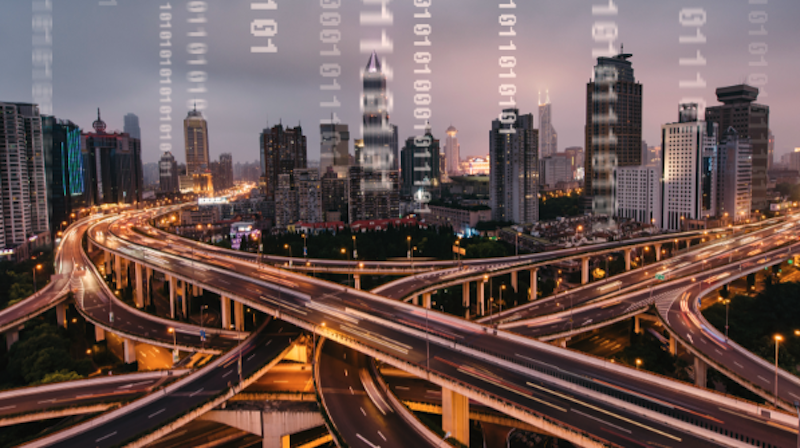Traffic congestion presents several significant challenges. Beyond causing frustration, prolonged gridlocks reduce people’s productive work hours and disrupts supply chains, leading to operational inefficiencies and increased costs for businesses.
To alleviate these issues, policymakers and leaders in the transportation sector are actively exploring innovative solutions to optimise traffic flow. Here are some of them.
1. Implementing Proactive Transportation Policies
Creating forward-looking policies that aim to manage and reduce traffic demand can significantly improve overall traffic flow and reduce congestion-related issues.
Strategically regulating and incentivising different aspects of the transportation sector enhances the efficiency of road networks, which can promote more sustainable travel and road use behaviours.
Using congestion pricing, for instance, can alleviate traffic stagnation. By imposing charges on vehicles during peak travel times, drivers might choose to travel during off-peak hours or opt for alternative modes of transportation.
Financially incentivising off-peak travel can distribute traffic more evenly throughout the day, reducing the number of vehicles on the road during peak times and smoothing out traffic flow.
Implementing effective ride-sharing regulations is another way to help mitigate traffic congestion.
Regulations can include offering incentives for ride-sharing, such as dedicated lanes, reduced tolls, and tax benefits for both drivers and passengers who participate in ride-sharing programmes, which can encourage more people to carpool.
Additionally, ride-sharing regulations can help manage the rapid growth of ride-hailing services. Integrating ride-sharing with public transit networks can provide people with seamless, multimodal transportation options that reduce their reliance on personal vehicles.
2. Adopting Smart Traffic Management Technologies
Utilising smart traffic congestion solutions can optimise urban mobility and enhance the efficiency of transportation networks. Solutions like IoT (Internet of Things) technologies allow for real-time monitoring and management of traffic conditions through interconnected sensors and data analytics.
Traffic monitoring sensors gather information on traffic flow, congestion hotspots, and vehicle speeds, enabling authorities to make informed traffic management decisions in real time.
Traffic management centres can also use the data gathered to adjust signal timings, reroute traffic, and provide timely updates to motorists through dynamic signage or mobile applications.
This proactive management not only reduces congestion but also enhances safety and improves the overall travel experience for commuters.
Automated enforcement technologies, such as AI CCTV cameras and electronic toll collection systems, also play a crucial role in managing congestion. These technologies can monitor vehicle movements, enforce speed limits, and detect illegal parking.
Automating enforcement processes allows authorities to efficiently address traffic violations, improve traffic flow, and reduce the likelihood of accidents caused by non-compliant behaviours.
Furthermore, automated systems free up resources that can be redirected towards more strategic traffic management initiatives, thereby enhancing overall urban mobility.
3. Boosting Public Transit Access and Reliability
Enhancing public transportation systems is essential for reducing traffic congestion and improving urban mobility.
As such, providing efficient, reliable, and accessible public transit options, can encourage residents to choose public transportation over private vehicles—thereby reducing overall traffic volume and its associated economic and social impacts.
Investing in smart metro systems, for one, is an excellent solution that can enhance not only the operational efficiency of metro rail systems but the efficiency of the overall public transit system.
These systems utilise advanced technologies, such as automated train control and integrated fare payment solutions, to provide a seamless travel experience for commuters.
By improving rail system performance and modernising the urban rail experience, metro systems can attract more ridership and alleviate pressure on road networks during peak hours.
Implementing a bus rapid transit (BRT) system is another strategy that offers a cost-effective alternative to traditional bus services by providing dedicated lanes, priority at traffic signals, and enhanced passenger amenities.
BRT systems operate on fixed routes with limited stops, ensuring faster travel times and more predictable schedules compared to regular bus services.
Developing BRT infrastructure and incorporating them with existing transit networks allow cities to provide commuters with efficient connections between neighbourhoods and business districts, encouraging them to choose public transit for their daily commute.
4. Redesigning Cities to Reduce Traffic Congestion
Engineering and urban planning solutions allow cities to create environments that prioritise sustainable mobility options and minimise the adverse economic and social impacts of congestion.
By investing in comprehensive road infrastructure improvements, the proper administrative agencies can redesign the city layout and make it accommodate growing urban populations without exacerbating congestion.
Projects such as expanding road capacities, upgrading intersections with roundabouts or smart traffic signals, and creating dedicated lanes for buses and bicycles can address the causes of traffic disturbances like bottlenecks.
They can even enhance connectivity between key destinations, improving overall traffic efficiency.
Furthermore, implementing mixed-use zoning can encourage more sustainable travel patterns. Areas designed for mixed-use development allow for residential, commercial, and recreational activities to coexist within proximity of each other.
This shortens the distance between homes, workplaces, and essential services, reducing the need for vehicles.
Tackling traffic congestion has its challenges, but addressing the causes of gridlock and congestion is crucial for ensuring economic growth and improving the quality of life for commuters and urban residents.
That’s why policymakers and transportation sector heads are implementing proactive and innovative solutions to alleviate the economic burdens and social stresses caused by congestion.

